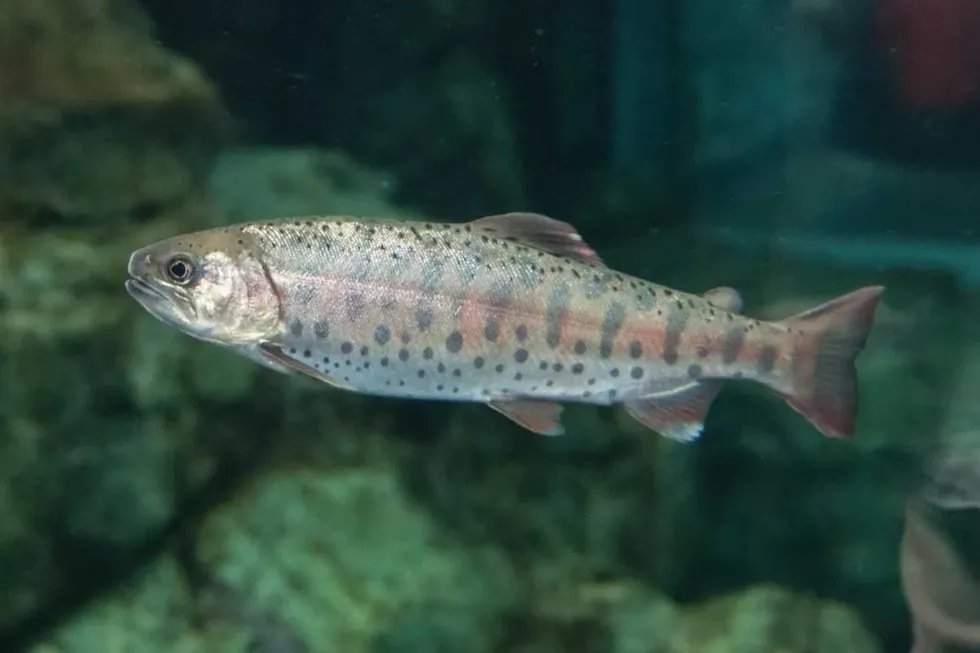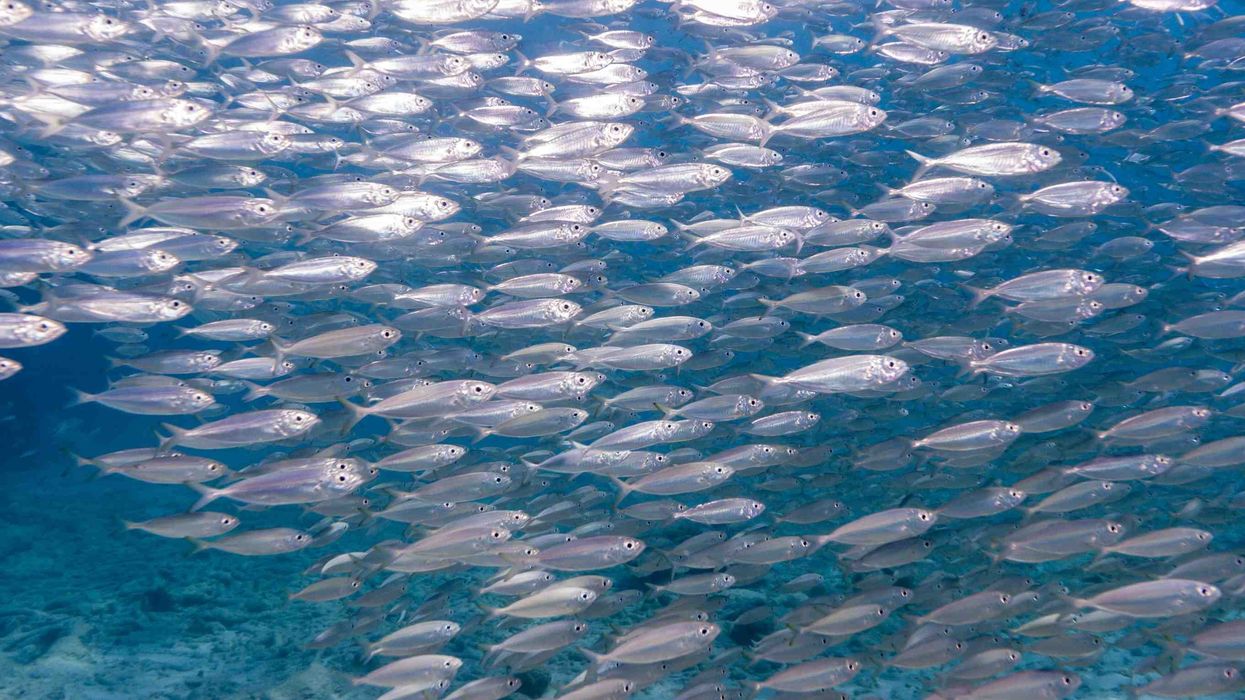The fish cherry salmon is a species of salmon that is found in the Pacific Ocean along with East Asian countries like China, North Korea, South Korea, Japan, and Taiwan. It has several subspecies, including the anadromous, the Biwa trout, the landlocked salmon from Japan, and the ‘amago’ salmon. The Japanese landlocked salmon is especially rare and endangered.
Cherry salmon are caught in fisheries and reared in aquaculture for commercial purposes. They are also eaten after being baked or broiled, and their price is approximately $15-$20 per lb. They are also introduced as gamefish in many places for fishing sports.
The cherry salmon is a character that can be caught in the popular video game 'Animal Crossing'. Many people who play 'Animal Crossing' can buy or sell this fish for 1,000 bells.
Keep reading the article for more interesting facts like the reason behind the name 'cherry salmon' and other info! Fun fact, they are also recognized as ‘amago’ and ‘yamame’ (in Japan)! If you liked this article with amazing cherry salmon facts, also check out the other articles with some great facts about Atlantic salmon and Pacific salmon.
Cherry Salmon Interesting Facts
What type of animal is a cherry salmon?
A cherry salmon (Oncorhynchus masou) is a species of salmon fish.
What class of animal does a cherry salmon belong to?
The cherry salmon (Oncorhynchus masou) belongs to the class of Actinopterygii, with its order being Salmoniformes.
How many cherry salmon are there in the world?
It has not yet been possible for scientists and researchers to estimate the population of cherry salmon (Oncorhynchus Masou) around the world. Since the Masu Salmon is either found in the wild or is caught by fishing and kept to breed for commercial purposes, it becomes difficult to record their exact population.
Where does a cherry salmon live?
The cherry salmon (Oncorhynchus masou) is a salmon native to East Asian countries such as China, North Korea, Japan, South Korea, Taiwan, and Russia, which lie beside the Pacific Ocean. They are also endemic to the Kamchatka region, Kuril islands, and Primorsky Krai.
What is a cherry salmon habitat?
The masu salmon is comfortable in both freshwater habitats such as a river or ocean or sea. In the wild, it prefers a habitat with a temperate climate and can go quite deep into the water 0-656 ft (0-200 m). They find an ideal habitat in the Western Pacific countries, where they are often caught.
Who does cherry salmon live with?
Salmons such as Japanese salmon and Taiwanese salmon found in the Western Pacific location are social creatures, and they live together in groups which are known as schools. In the wild, the young masu salmon/masu remain hidden for a long time to protect themselves from predators.
How long does a cherry salmon live?
The cherry salmon/masu species found in the Western Pacific location - spends parts of its life in different water sources. This is known as the Salmon sea-run form.
The cherry salmon lives in a river or other freshwater sources like a stream for up to three years. After that, they move to the Pacific Ocean or the nearest sea, where they live for a further three or four years.
How do they reproduce?
This salmon species reproduce through the process of spawning in a river or the sea. The female salmon chooses a spawning site where she lays multiple eggs. The male salmon helps in spawning by fertilizing those eggs outside of her body. Once the eggs are laid, the female covers them with gravel.
These gravel nests are called redds. Mature or adult salmon die shortly after breeding. The spawning process starts after a sea-run form is made by the fish.
What is their conservation status?
The International Union for Conservation of Nature (IUCN) has listed the cherry salmon as Endangered in its Red List. Scientists and researchers are worried that illegal, unreported, and unregulated fishing is causing a dent in the population of the cherry salmon and have noted it to be the least abundant of the Pacific salmon.
Cherry Salmon Fun Facts
What do cherry salmon look like?

A mature cherry salmon or the sima has a dark-colored back. There are bright red or crimson-colored stripes on the sides of the body, which merge into the abdomen of the fish in one band. The fish is called cherry salmon because of its unique red coloring.
How cute are they?
Cherry salmon may not be cute to a lot of people.
How do they communicate?
It is suggested by many scientific studies that salmons communicate through the color of their skin! The cherry salmon, Japanese salmon, Taiwanese salmon, and more types of this species can often face territorial disputes. During such disputes, the less aggressive fish often darkens the color of their body so that the more aggressive fish does not attack them anymore.
How big is a cherry salmon?
The average length of a sima or a cherry salmon is between 20-28 in (50-70 cm). The giant squid is almost 10 times the size of a cherry salmon as it is approximately 16.5 ft (5m) in size!
How fast can a cherry salmon swim?
There has not been much research about how fast cherry salmon, Japanese salmon, or Taiwanese salmon can swim. However, it has been noted that these fishes can expertly maneuver in the fast-flowing streams of water bodies and can swim through them.
How much does a cherry salmon weigh?
A cherry salmon usually weighs between 4.4-5.5 lb (2.0-2.5 kg).
What are the male and female names of the species?
A male cherry salmon is called cock, and a female fish of this salmon species is called a hen.
What would you call a baby cherry salmon?
A baby cherry salmon has several names depending on where it is in its life cycle and its maturity. After hatching from eggs, the young fish is called an alevin which gains maturity as fry. The fry further goes through smoltification to adult maturity.
What do they eat?
While in the sea, the cherry salmon feeds intensely on crustaceans and small fish. This species also feeds intensely on zooplankton and smaller invertebrates when they are young.
Once the salmon becomes bigger, they can eat krill or herring. Salmons, which are reared in farms, are fed a mixture of fish and other fresh crustaceans and organisms taken from the sea.
Are they poisonous?
Scientific research does not indicate that cherry salmon found in the Pacific Ocean are poisonous. Rather, people like to eat this salmon in different ways.
However, it is prohibited to import cherry salmon into the United States of America because of the risk of the cherry salmon carrying pathogens. Therefore, the cherry salmon can only be imported if it is alive and has a health certificate or if it is dead and properly eviscerated.
Would they make a good pet?
Cherry salmon is not really a conventional fish that can be kept as a pet. They prefer their usual habitat of a fresh stream, a river, an ocean, or a sea where they can swim around.
Did you know...
There are many kinds of fish in the Masu salmon family that one can eat. Some of the varieties in the family include cherry salmon, chinook salmon, chum salmon, coho salmon, pink salmon, and sockeye salmon.
More varieties of salmon fish are found in freshwater bodies such as a river or a stream.
These fishes are called trout steelhead or rainbow trout and the cutthroat are a few types of this salmon. These salmons are mostly caught in the wild, and their price differs based on how rare the type of fish is.
One of the rarest and most endangered fish in the world is the Japanese salmon which is known as the Formosan landlocked salmon. The Formosan landlocked salmon is a subspecies of the Masu salmon.
Due to over-fishing and global warming, along with population, their habitat of cold water is slowly being destroyed. In the last survey, only 400 of these subspecies were found in the wild.
What is the difference between cherry salmon and tuna?
The most obvious difference between cherry salmon and tuna is that they both belong to different species. They are both full of protein and other nutrients like vitamins and minerals, but there are also differences.
Tuna has a higher amount of protein and is quite meaty. On the other hand, cherry salmon has a moist texture and an oily flavor due to its high fat content.
Cherry salmon has higher calories than tuna, but most of those calories come from Omega-3s. A serving of masu salmon will also give more amounts of vitamin D to the body than a serving of tuna fish.
Which is the rarest salmon?
King salmon, also called chinook, is one of the rarest salmon fishes in the world. As a result, it is also the most expensive salmon and can fetch a high price in markets. However, it has a large geographical range that extends from the coast of California to the north of Alaska and can even be found in Asia.
Here at Kidadl, we have carefully created lots of interesting family-friendly animal facts for everyone to discover! Learn more about some other fish including Atlantic cod facts and hammerhead shark facts.
You can even occupy yourself at home by coloring in one of our free printable cherry salmon coloring pages.










